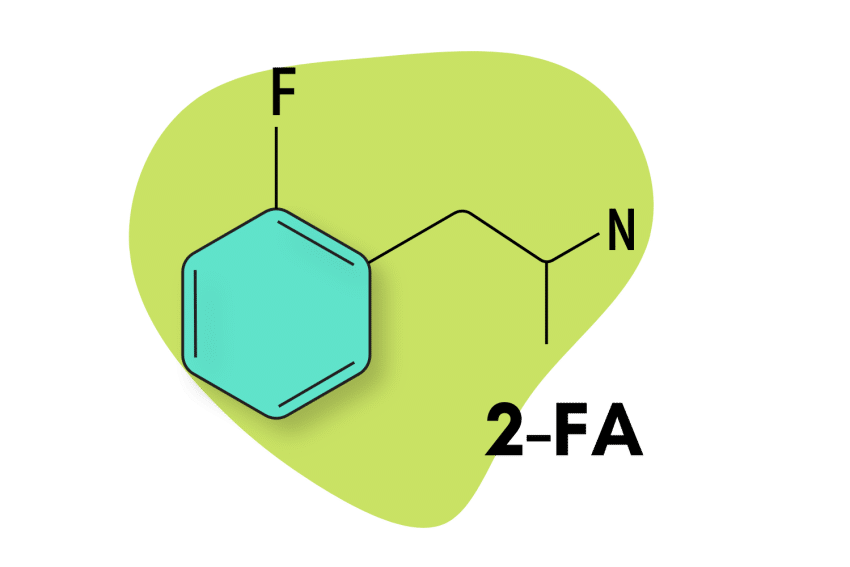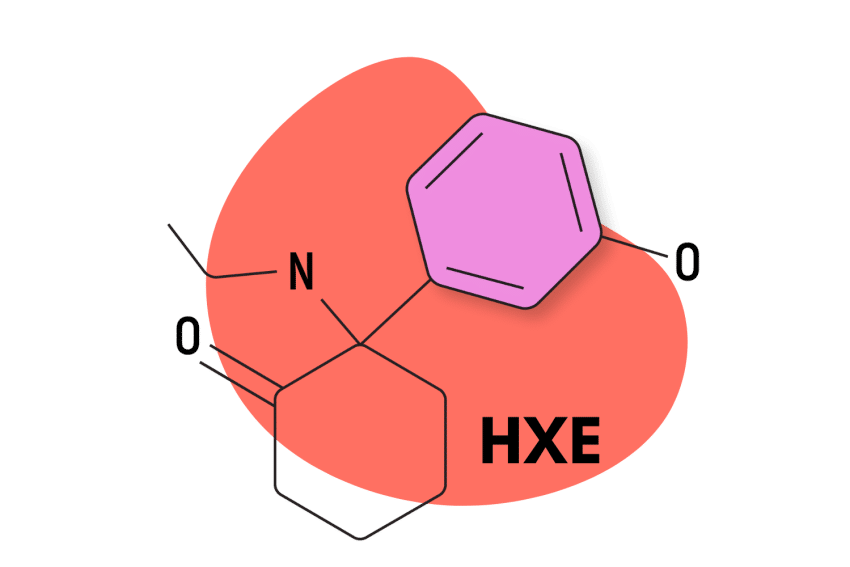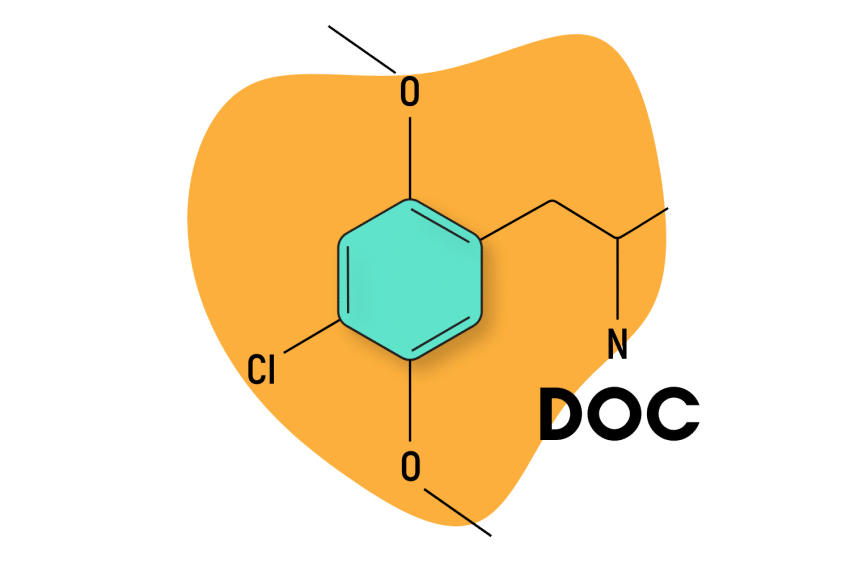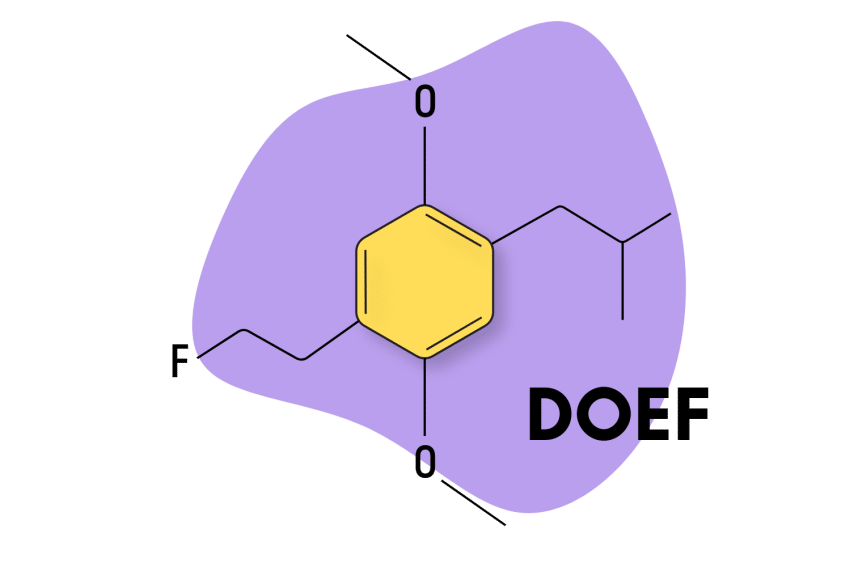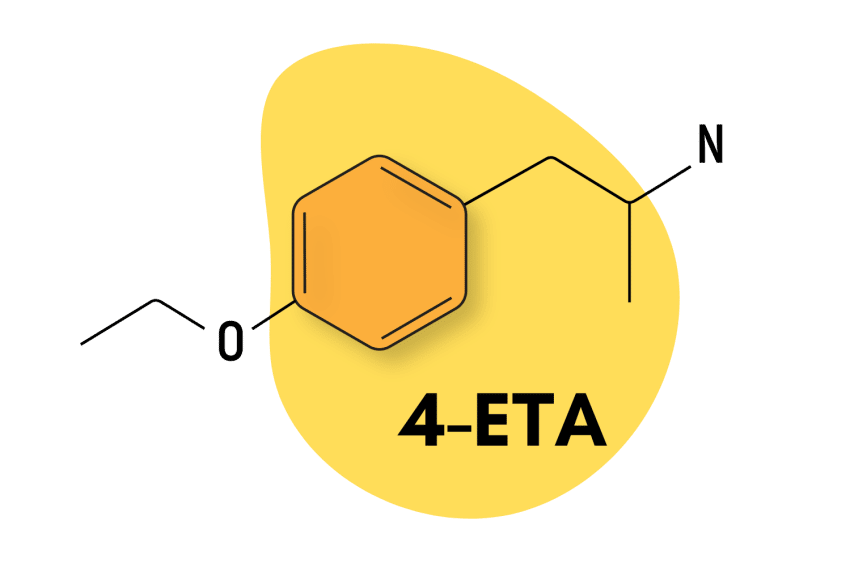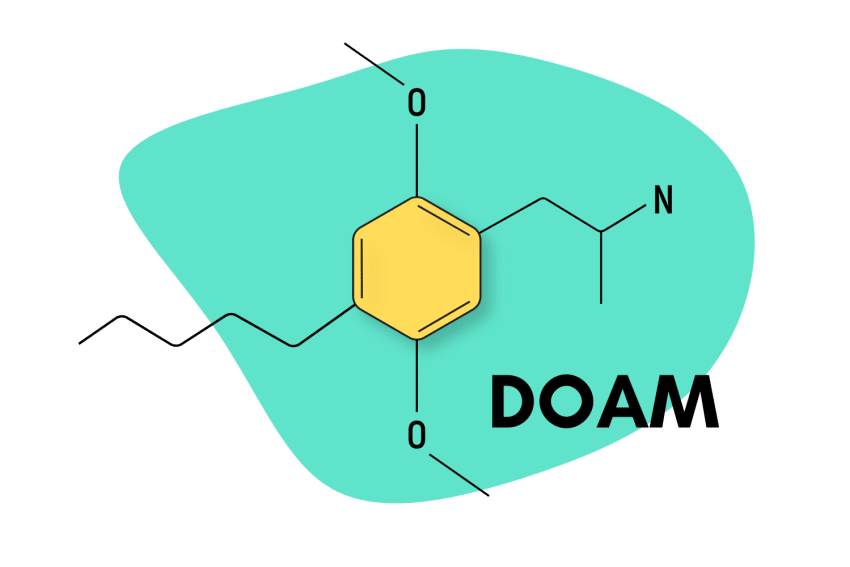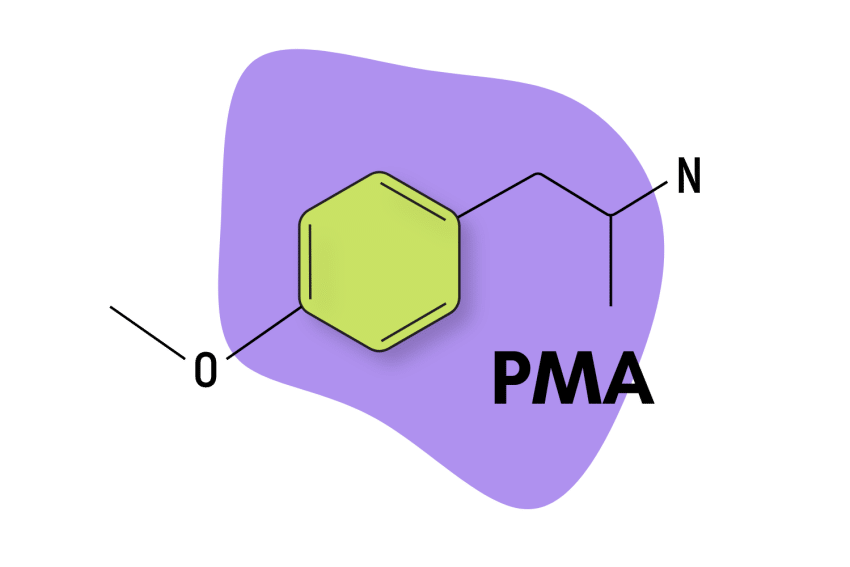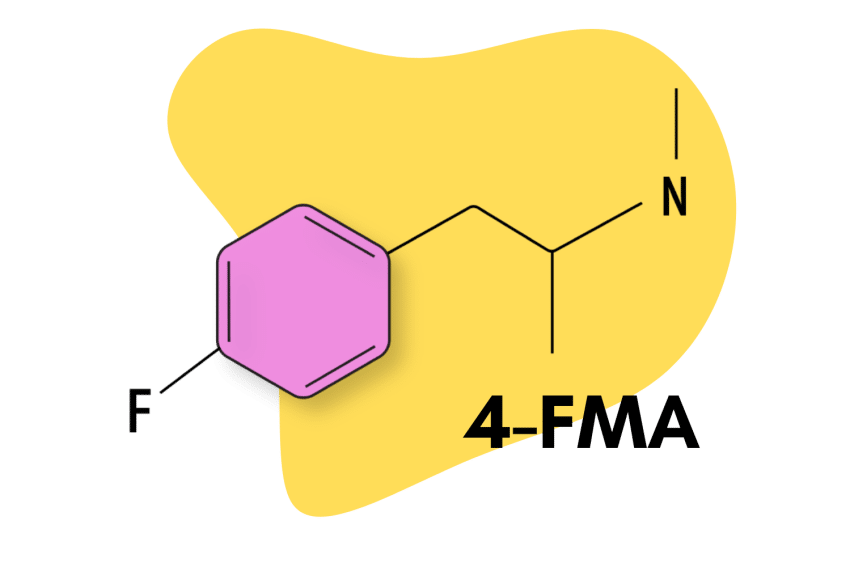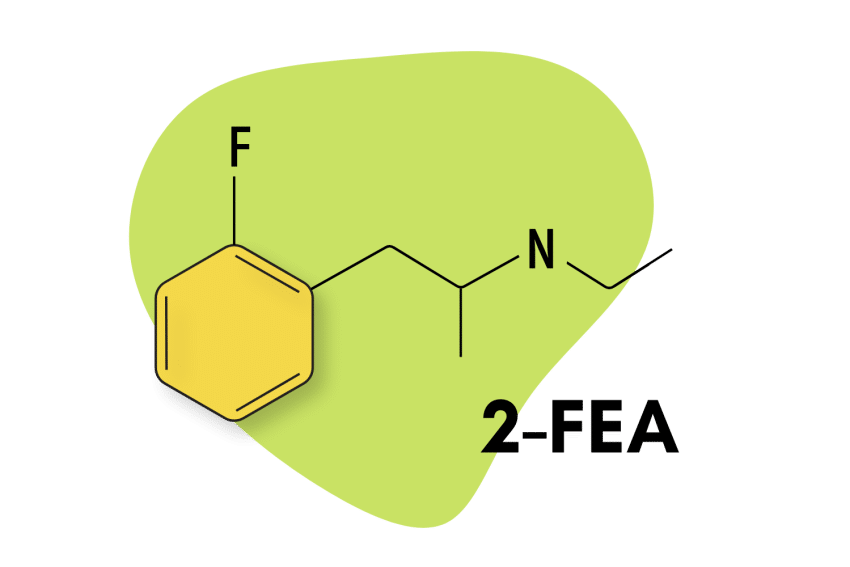3-Fluoroamphetamine (3-FA): The Good, the Bad & the Unknown
Although it seems to have lots of similarities with methamphetamine, user reports for 3-FA are inconsistent.
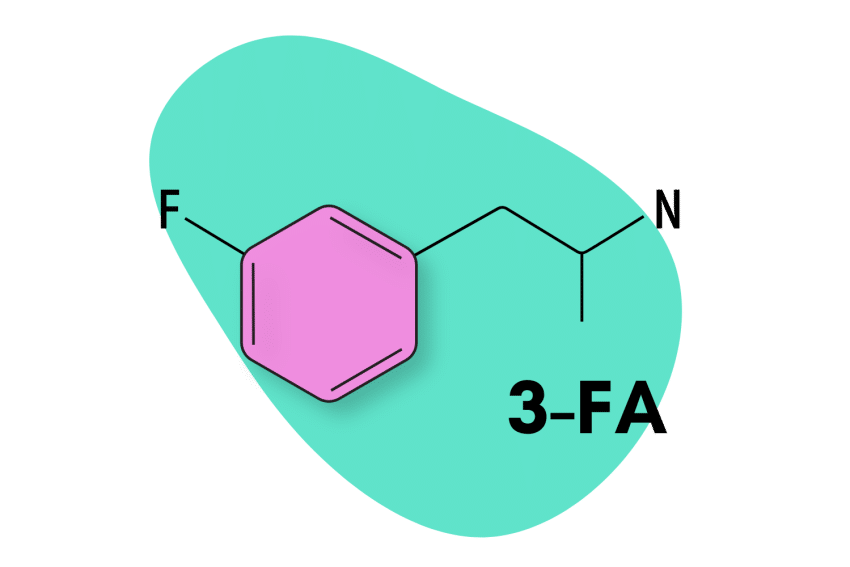
What is 3-FA?
3-FA is a psychostimulant amphetamine and a designer drug. It belongs to a subtype known as fluorinated amphetamines, a class of compounds that first started appearing on the market around 2010 and are known for their emphasis on stimulant properties.
Structurally, fluorinated amphetamine is defined by the presence of a fluoride group attached to the central ring moiety of the base amphetamine molecule. They’re just one of the many types of amphetamine analogs to come out of the designer drug market in recent years.
Unlike most other synthetic drugs, which serve mostly as recreational compounds, 3-FA has been studied for its potential therapeutic value in the treatment of attention deficit hyperactivity disorder (ADHD), obesity, and cocaine use disorder (CUD) due to its similar chemistry and pharmacologic action to amphetamine and methylphenidate [1].
3-FA is regarded by users as being similar to methamphetamine both in its effects and its potency. It’s rarely found on the streets and only sometimes sold online through unregulated vendors.
3-FA Specs
| Chemical Name | 3-Fluoroamphetamine |
| Level of Risk | Moderate |
| Other Names | 3-FA, PAL-353 |
| Most Common Side Effects | Anxiety, overstimulation |
| Duration of Effects | Four to six hours |
| Estimated Threshold Dose | 10 mg |
| Common Dose | 15 to 30 mg |
| Legality/Status | Research Chemical / Not a controlled substance |
| PubChem ID: | 121501 |
| CAS# | 1626-71-7 |
Trip Sitter Safe 3-FA Guidelines
- 🐍 I understand why psychostimulants should be treated with respect
- ⚖️ I’m familiar with the laws for 3-FA in my country & state
- 🍄 I’m familiar with and confident in the dose I’m taking
- 🧪 I’ve tested a sample of the substance I’m using with a drug-testing kit
- 💊 I’m not mixing any medications or other substances with 3-FA
- 🏔 I’m in a safe & comfortable environment with people I trust
- 🐺 One of the members of my group is responsible and sober (AKA a trip sitter)
- ⏳ I have nothing important scheduled for after the trip
- 🧠 I’m in a sound & healthy state of mind
- ❤️ I don’t have any underlying health issues — don’t take 3-FA if you have underlying heart, neurological, or psychiatric disorders
- 👭 Use the buddy system — 3-FA can remove your inhibition and allow you to make unsafe decisions, always stay with people you trust, and never go out alone
- 🌵 I understand the risk of dehydration — it’s easy to become dehydrated on 3-FA, so make sure you’re drinking a cup of water every hour while using 3-FA
How Does 3-FA Work?
Research on the pharmacology of 3-FA is not extensive, but what does exist suggests the compound is primarily a selective dopamine and norepinephrine releaser with modest selectivity for serotonin [1].
This means that 3-FA increases the neurotransmission of dopamine and norepinephrine, and serotonin as well, although to a lesser extent.
When more research is available, researchers can usually provide more in-depth information as to the differences in receptor affinity between each compound and whether or not secondary mechanisms are also present.
In the case of 3-FA, two main mechanisms of action are present:
- Inhibition of the reuptake process
- Stimulation of neurotransmitter release from the presynaptic neuron
Although they go about it through different means, both mechanisms work towards the same goal: increasing the amount of active neurotransmitters in the brain.

The inhibition of the reuptake process is likely the most commonly utilized pathway when it comes to psychostimulants. It works by inhibiting the function of transporter proteins, whose job it is to move neurotransmitters from the synaptic cleft, the space between neurons, and back into the presynaptic neuron. By inhibiting this process, a larger amount of neurotransmitters stay in the synaptic cleft, which then leads to a higher volume of neurotransmission and, thus, more of the pharmacologic activity associated with said neurotransmitters.
The precise mechanism by which certain compounds stimulate the release of neurotransmitters from the presynaptic neuron and into the synaptic cleft is still largely unknown, but, as it happens with 3-FA, this pathway is often paired with inhibition of the reuptake process.
The effects of dopamine and norepinephrine stimulation are associated with the stimulant properties of psychostimulants, while serotonin is linked to the more empathogenic and psychedelic qualities. The modest serotonin activation in 3-FA suggests the compound leans strongly towards the stimulant side, but that doesn’t mean that some measure of serotonergic properties won’t be present.
How certain differences in neurotransmitter stimulation, mechanisms of action, and other complicating factors add up to produce a certain effects profile is not completely understood. For example, there are plenty of compounds that are almost exclusively dopaminergic but, contrary to what might be expected, consistently produce empathogenic properties.
What Does 3-FA Feel Like?
The chemistry of 3-FA suggests the compound possesses similar effects to amphetamine and methylphenidate, two strong stimulant compounds with virtually no empathogenic or psychedelic properties. Unfortunately, there are basically no scientific studies to help us prove this. In order to assess the subjective effects produced by 3-FA, we’re forced to rely on information found on online drug forums.
Online users consider 3-FA to be a potent and complex stimulant with mild empathogenic undertones. When compared to other members of its class, it does not appear to have the productivity and focus-enhancing effects of 2-FA and is much less empathogenic than 4-FA.

The following effects have been associated with the use of 3-FA:
- Physical Effects — Stimulation, Tactile enhancement (only at higher doses), Physical euphoria, Dehydration, Appetite suppression, Increased heart rate, Increased perspiration, Teeth grinding (less intense than that of MDMA and 2-FA)
- After or “Come Down” Effects — Anxiety, Cognitive fatigue, Depression, irritability, Motivation suppression, Thought deceleration, Wakefulness
- Cognitive Effects — Cognitive euphoria, Thought acceleration, Focus enhancement, Anxiety suppression, Wakefulness, Analysis enhancement, Motivation enhancement, Compulsive redosing, Increased music appreciation (higher doses only), Time distortion
Pharmacokinetics of 3-FA
When it comes to pharmacokinetics (PK), the values for 3-FA seem to be the following:
- Onset of Action — 30 minutes
- Duration of Effects — Four hours
- After Effects — 1 hour
Unfortunately, due to a lack of studies, no information is available as to peak plasma concentrations or elimination half-life.

In general, psychostimulants have rapid PK values, and this often results in users experimenting with different methods of administration in order to maximize both long and short-term effects. In the case of 3-FA, though, online information seems to suggest that the average duration of effects remains the same regardless of what method is used.
Is 3-FA Safe?
3-FA, and other compounds like it, can only be considered relatively safe when used responsibly. And even then, there are no guarantees.
Recreational psychostimulants like 3-FA have several inherent factors which tend to put users at risk. The most problematic is that, given their recreational nature and their fast pharmacokinetic values, psychostimulants like 3-FA encourage compulsive redosing, a habit that tends to reinforce addictive behavior and increases the risk of acute intoxication. Recreational drugs are also often used in conjunction with other drugs, and polydrug use is always more dangerous than using only one compound.

The risk factors associated with recreational drug use are one thing, but the pharmacologic risks associated with stimulants, empathogens, and psychedelics are quite another.
The three “realms” of psychostimulant effects all have certain risks associated with them, but, in general, the dangers associated with the stimulant properties outweigh those related to empathogens and psychedelics.
1. Stimulant Risks
Amphetamine stimulants like cocaine and methamphetamine have several adverse effects on the health of users, especially with regard to cardiovascular health.
Highly stimulant amphetamines like synthetic cathiones are more potent and carry a higher risk of acute overdose, which can result in serious health events like cardiac arrest.
The majority of side effects and long-term health issues associated with amphetamines like 3-FA are related to their stimulant qualities.
2. Empathogen Risks
Empathogenic compounds like MDMA (and, to some degree, 3-FA) carry another layer of risks. These compounds can alter one’s emotions and make people “feel” like they’re in love. There have been a lot of problems with non-consensual sex as a direct result of empathogen usage.
Due to the impact, empathogens have on serotonin levels, the risk of serotonin syndrome is also considerable.
3. Psychedelic Risks
Predominantly psychedelic compounds have the least physiological risks associated with them and are known to have little abuse potential. The possibility of a “bad trip” is definitely something to consider, but even though it might be a terrible time, these events are not even close to life-threatening, although they may have serious psychological repercussions.
Harm Reduction Tips for 3-FA
Here are some basic but effective harm-reduction principles to keep in mind whenever you’re using recreational drugs:
1. Be Mindful of the Potency
Users should always have a general idea of the dosing ranges associated with their drug of choice. In other words, they should know what a “light,” “common,” and “heavy” dose looks like. This is especially true when using potent compounds which have a smaller window of error.
Miscalculating a dose with a potent compound can lead to a user crossing over from the “heavy” dose range and into the area where they’re now in imminent danger of acute intoxication. If someone offers you a compound of unknown potency, the smart move is always to decline or to refer to someone who does know.
Test Your Drugs
There is no guarantee of purity when dealing with designer drugs bought online or, worse, on the streets. Users should always try to source their drugs from vendors that are held in high esteem, but even then, they should also invest in a reagent test kit to make sure their compounds are free from the worst adulterants.

At around $40, these test kits are affordable and provide enough material for hundreds of tests. If you’re unsure of how to use them, check out our comprehensive guide for detailed instructions.
3. Avoid Mixing
Mixing potent amphetamines with other pharmacological compounds is never a good idea. In fact, polydrug abuse accounts for the vast majority of fatalities related to recreational drug use. Even though some combinations might feel like they “balance each other out” in terms of effects, the reactions that happen in the body are always negative.
3-FA Drug Interactions
There are three main types of interactions that happen as a result of poly-drug use:
- Agonistic interactions — These are drugs that have a similar set of effects. When combined, their effects become stronger and can lead to side effects.
- Antagonistic interactions — These are drugs that have conflicting effects and may counteract each other. If medications are counteracted, they may lose their effectiveness in treating medical conditions.
- Liver metabolism interactions — The liver metabolizes virtually all substances that enter the body. If two or more drugs require the same enzymes, the rate of metabolism can slow down, causing both drugs to build up in the system.

And in the case of psychostimulant compounds, here are the specific risks associated with certain types of drug combinations:
1. Amphetamine & Other Stimulants
Combining a potent stimulant like 3-FA with other stimulants like caffeine or cocaine will produce an agonistic interaction in the body. These types of combinations can become quite dangerous when the two drugs potentiate each other, as the end result will likely be exponentially more powerful. Agonistic interactions usually end up producing more side effects and make the risk of acute intoxication more prevalent.
2. Alcohol & Other Depressants
Compounds that depress the central nervous system create an antagonistic interaction when combined with stimulants. Antagonistic interactions aren’t as dangerous as agonistic ones because they don’t threaten to overwhelm the user with too much of one type of effect but can cause dangerous behaviors.
Masking the effects of a stimulant with a depressant or vice versa will often make a user think they are soberer than they really are, thus encouraging further consumption. Once the stimulant effects fade away, the user may be overwhelmed by the depressive effects.

3-FA Dosage
According to self-assessment reports, the dosage values for 3-FA break down as follows:
| Estimated Threshold Dose | 5 to 10 mg |
| Light | 10 to 15 mg |
| Common | 15 to 30 mg |
| Strong | 30 to 60 mg |
Final Thoughts: 3-FA
3-FA is a mysterious compound. There is little doubt that it’s primarily a stimulant, with many users reporting strong similarities with amphetamine. Still, it also seems to have at least a certain amount of serotonergic qualities due to the presence of mood-enhancing effects. It does not seem to hold any empathogenic qualities.
Little research suggests that 3-FA is similar to methylphenidate, a stimulant often used for productivity purposes. However, user reports state that 3-FA does not provide focus-enhancing effects like its analog 2-FA. On the other hand, what is documented is an enormous amount of variety.
It would appear that 3-FA varies considerably in its effects, likely as a result of whoever is taking it. The strange and undefined nature of 3-FA is likely the reason why it is not a popular designer drug.
References
- Jiang, Y., Murnane, K.S., Blough, B.E. et al. Transdermal Delivery of the Free Base of 3-Fluoroamphetamine: In Vitro Skin Permeation and Irritation Potential. AAPS PharmSciTech 21, 109 (2020). https://doi.org/10.1208/s12249-020-01649-5

